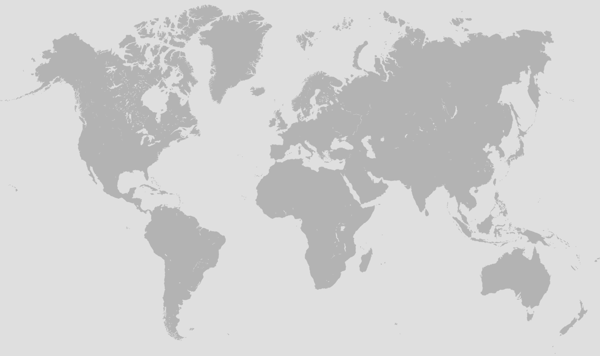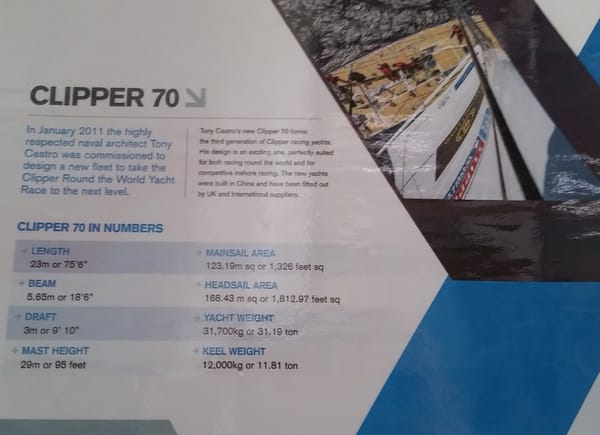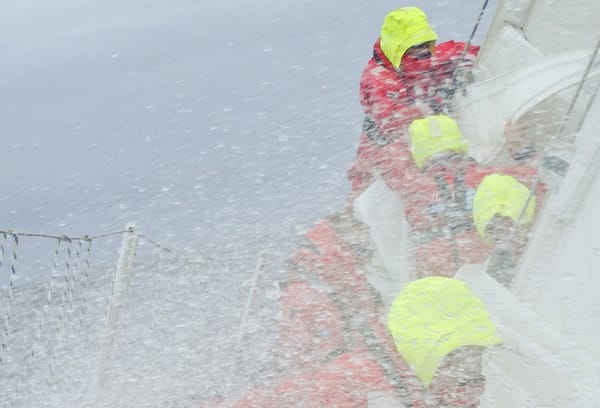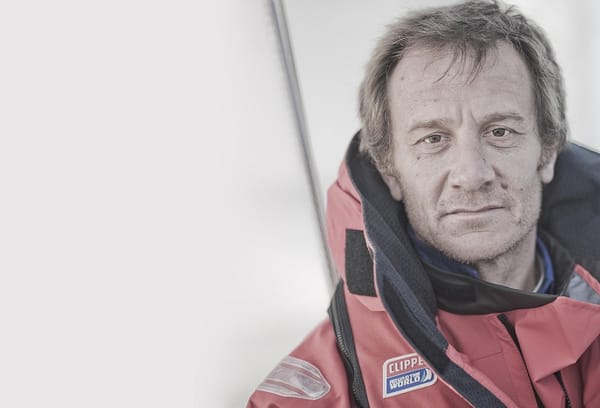Clipper Round the World
Links
This is one of the biggest challenges of the natural world and an endurance test like no other. With no previous sailing experience necessary, it's a record breaking 40,000 nautical mile race around the world on a 70-foot ocean racing yacht. All that is asked of participants is a good level of fitness, an age over 18 - and a thirst for adventure into the unknown. Divided into eight legs and 16 individual races, you can choose to complete the full circumnavigation or select individual legs. It is the only race in the world where the organisers supply a fleet of twelve identical racing yachts, each with a fully qualified skipper to safely guide the crew.
Normally the domain of seasoned pros, this supreme challenge is taken on by ordinary, everyday people. Having completed a rigorous training course, participants are suited and booted in the latest extreme protection gear to commence the race of their lives - an unparalleled challenge where taxi drivers rub shoulders with chief executives, vicars mix with housewives, students work alongside bankers, and engineers team up with rugby players.
The sea does not distinguish between Olympians or novices. There is nowhere to hide - if Mother Nature throws down the gauntlet, you must be ready to face the same challenges as the pro racer. Navigate the Doldrums en route to South America, endure epic Southern Ocean storms, experience South African sunsets, face the mountainous seas of the North Pacific - and bond with an international crew creating lifelong memories before returning victorious.
Applications are now open for the tenth anniversary series of the Clipper Round the World Yacht Race, which starts in summer 2015. Seize the moment, unleash the adventure.

This is one of the biggest challenges of the natural world and an endurance test like no other. With no previous sailing experience necessary, it's a record breaking 40,000 nautical mile race around the world on a 70-foot ocean racing yacht. All that is asked of participants is a good level of fitness, an age over 18 - and a thirst for adventure into the unknown. Divided into eight legs and 16 individual races, you can choose to complete the full circumnavigation or select individual legs. It is the only race in the world where the organisers supply a fleet of twelve identical racing yachts, each with a fully qualified skipper to safely guide the crew.
Normally the domain of seasoned pros, this supreme challenge is taken on by ordinary, everyday people. Having completed a rigorous training course, participants are suited and booted in the latest extreme protection gear to commence the race of their lives - an unparalleled challenge where taxi drivers rub shoulders with chief executives, vicars mix with housewives, students work alongside bankers, and engineers team up with rugby players.
The sea does not distinguish between Olympians or novices. There is nowhere to hide - if Mother Nature throws down the gauntlet, you must be ready to face the same challenges as the pro racer. Navigate the Doldrums en route to South America, endure epic Southern Ocean storms, experience South African sunsets, face the mountainous seas of the North Pacific - and bond with an international crew creating lifelong memories before returning victorious.
Applications are now open for the tenth anniversary series of the Clipper Round the World Yacht Race, which starts in summer 2015. Seize the moment, unleash the adventure.


As you depart China, expect to be treated like a superhero as the media and spectators snap away, video, cheer and applaud as you walk down to your racing yacht. The first few days when snow fell on a grey sea will be long forgotten as you work your boat to the maximum and reach the first waypoint at the southern tip of Japan. It might be a bit early to smile at the memory of the huge Pacific rollers that picked up your 70-foot yacht and allowed it to surf at 30 knots down into the trough ahead - save that for your first cold beer in Seattle, USA!
After more than a month at sea, crossing the International Date Line and with nearly 6,000 nautical miles left in your wake, you will be preparing to make one of the most momentous landfalls of the Clipper Round the World Yacht Race.
By then, the incredible start spectacle put on by the Chinese sailing city of Qingdao will be distant memory - but one that will live with you forever.
Knowing that you are one of the few that will ever race a yacht across the planet's greatest ocean makes the cold, wet and exhausting race completely worth while. You will have lived teamwork, not just talked about it. You will have stayed safe, raced fast and looked after yourself and your crew mates. The only thing better than living one of life's greatest challenges, is sharing it with an amazing team.

Leg 7 begins under the eyes of the American media as Race 10 heads back out into the vast Pacific Ocean. While the fleet leave the city of Seattle, the talk will be of tactics - inshore or offshore? The inshore current can give a decent ride but, with the land close by, fickle winds affected by night and day temperatures can provide an unpredictable breeze. Further offshore, the current can't help you but more consistent winds can. A poor tactical decision could cost you the race, even at this early stage.
Whatever the decision, the charge south will be a swift one, to begin with... To make life more difficult, the further south you go, the more fluky the breeze gets. Central America typically brings high temperatures and light winds. This is a real test of yacht racing skill.
Patiently and constantly trimming your sails to find an extra quarter knot of boat speed could well make the difference between first and last. You won't be able to switch off for a moment. Ocean racing is like a lengthy game of chess and often the final results only become clear on the last couple of days. With boats sometimes finishing within a few minutes of each other, it's never over 'til it's over. Then from the finish line off Panama City, stand by for one of the engineering wonders of the world: the Panama Canal.
You rise through the locks on the Pacific side up to Gatun freshwater lake, fed from the surrounding rain forests. Then it's down the locks on the other side and the waters of the Atlantic welcome the race fleet again. It really does feel like coming home. Back in the Atlantic...
The next race takes you north through the blue water sailing playground of the Caribbean. Stand by for tropical heat, trade winds and squalls. You can expect the challenges to come from every point of the compass all the way up to New York. As you draw closer, don't be surprised if thunderstorms make a regular appearance over the horizon. But, as you sail past the Statue of Liberty and moor close to Ground Zero, you will probably be the only people in the city who have arrived from the west coast by sea. The city never sleeps, and you definitely won't.
You've got some serious celebrating to do after taking on such a tough mental and physical challenge.
While this might be the homeward bound leg, there is plenty of racing still to be had. With more individual races, an Atlantic crossing and homecoming, this is one of the most sought after legs on the race. And, with over 40,000 nautical miles of racing already behind you - there are still valuable racing points to be won. Third place on the overall race has been decided on the last race of Leg 8 on the last two Clipper Race editions.
The weather might be mixed but the competition is hot - with teams battling it out for the final race points. The first race takes you north and a check of the sea temperature will tell you when your racing yacht is getting a helping push from the Gulf Stream. A further check will tell you when it gives way to the cooler Labrador Current and the mixture in seawater often produces unpredictable fog banks. Your last ocean race across the Atlantic might seem like familiar ground, especially to the RTW crew, but don't take this mighty ocean for granted. You need to stay focused, race hard and sail safe. The route will have waypoints to avoid any risk from ice and will take you close to the Flemish Cap, a fishing ground made famous in the book and film, The Perfect Storm.
It's a 3,000 nautical mile blast back towards Europe and one of the warmest welcomes of the whole race in Derry-Londonderry. A week long celebration to mark your achievements - you can expect concerts, festivals and an endless flow of Guinness.
With your odyssey almost over, it's a great place to gather your thoughts and put your achievements into perspective. But still the challenges come thick and fast. A short and intense race from Ireland back to the finish port, more important race points to collect and a hero's welcome. More people have climbed Everest than sailed around the world. RTW members of the Clipper Race crew are about to join that small and elite group. These final miles have all the pressure of extra time in the World Cup final. Although it's not just the winners who receive a hero's welcome...
The third generation of one-design Clipper Race yachts debuted in the Clipper 2013-14 Race, proving to be faster and more dynamic than previous Clipper Race yachts, breaking speed records of 35 knots [OneDLL, Leg 6].
The twelve 70-foot yachts make up world's largest matched fleet of ocean racing yachts. Designed by renowned naval architect Tony Castro, they are the shining jewel in the Clipper Race crown, perfectly adapted to this gruelling sailing challenge.
As with all lean, mean ocean racing yachts, the Clipper 70s are not for the faint hearted. They are by design stripped of all luxuries. Crew must become experts at living in a confined space, managing all their kit and belongings as they settle into their new home.
The Clipper 70s feature twin helms, twin rudders and a six-foot bowsprit, which allows the inclusion of three large asymmetric spinnakers and a suite of Yankee headsails, which combine to increase performance and boat speed. The new hull design produces better performance and control, especially in the light winds encountered near the Equator or between weather systems when crossing oceans. The design provides total control in the heaviest of conditions, ensuring not only high speeds, but safety too.
Today's fleet is in stark comparison to the one which began the very first Clipper Round the World Yacht Race in 1996. Development ideas have been taken from both previous yacht designs: the Clipper 60s and Clipper 68s.


